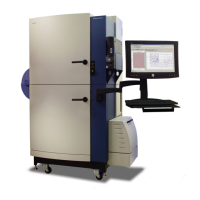Robotic Integration
240 0112-0109 H
is started, since all required plates may not be present in the
instrument. Since the software can be configured to name the data file
based on the bar codes of the plates used, it is possible that the data
file name will change as an assay is completed.
Setting Up Protocols for Remote Control Use
General Directions
Protocols must be created in manual mode prior to entering remote
mode.
They should also be tested in manual mode to ensure that they perform
as expected.
Setting up protocols is described in the User’s Manual and users should
be familiar with this process before reading further in this section. This
section will describe particular items the user should be aware of when
setting up protocols to be run in remote mode.
Settings Screen
Read Mode settings
In the settings screen, configure the read modes. The settings for the
read mode will be dependent on the assay dye, plate type, cell type and
condition, etc. These settings are determined during assay
development and no changes are required when switching into remote
mode.
It is not currently possible to automatically vary these settings based
on the particular cell plate loaded.
Assign Plate settings
Assign plates to the required positions for the assay in the Assign
Plate to Position group box. The assignment of plates can be critical
to the smooth functioning of the assay.
Only one type of plate can be assigned to a position throughout an
assay. For example, it is not possible to assign a normal plate to a
position for the first part of an assay and then assign a deep-well plate
to that position for the rest of the assay.
The read plate is always assigned to the read position. There are no
special suggestions in remote mode for this assignment.
The assignment of source plates and tips should be carefully
considered. The pipettor and the plate handler are both used in remote
assays and must share the space above the plate locations. The
instrument monitors the locations of the pipettor and the plate handler
and moves them if necessary to prevent collisions. The pipettor and
plate handler are never allowed to be above the same plate position at

